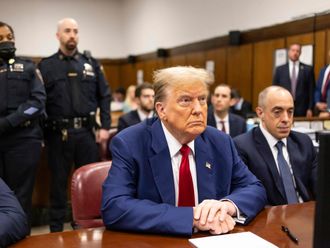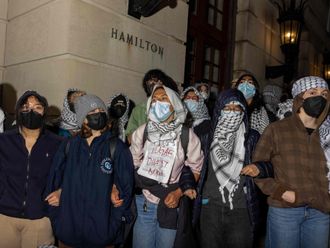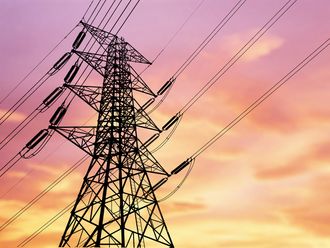Washington: Fearing he would die if he stayed, Mohammad fled the civil war in his home country of Syria, heading to Saudi Arabia where he spent six years working as a physician. While there, Mohammad worked toward his goal of coming to the United States to train.
He aced the US exams required of all physicians and scored an interview with a New York hospital. Officials there were so impressed that they offered Mohammad a spot in their residency programme that day.
But when President Trump instituted an executive order barring Syrians from coming to the United States, Mohammad’s chances of working in New York diminished.
“I did everything required to get the licence in a formal way, and in a legal way, so I can start my training like any international physician who wants to complete his certification in the United States,” said Mohammad, who asked not to use his last name for fear of affecting his visa application.
For the second consecutive year, the number of noncitizen international medical graduates who applied to study in US residency programmes has declined. A total of 7,067 foreign physicians submitted their choices for US residency programmes for 2018, down 217 from last year and 393 from 2016, according to data released on Friday. That’s almost 20 per cent of the 37,103 total active applicants.
The number of foreign physicians seeking graduate medical education in the United States has fluctuated in years past. But the timing of the most recent decline raises concerns among medical professionals, who say the US health care system is increasingly reliant on skilled immigrants.
The share of US doctors and surgeons who are immigrants grew from 20 per cent in 1990 to 28 per cent in 2016, according to the Migration Policy Institute think tank in Washington. The number of immigrants in those positions more than doubled in that time.
“It’s obviously concerning to us that this decline started at the same time that the administration began discussing implementing a travel ban or restrictions on foreign nationals entering this country,” said Mona Signer, president and chief executive of the National Resident Matching Programme, a private, non-profit organisation that uses an algorithm to match medical students to residency programmes. “Can I tell you for certain that’s the cause? No, I can’t tell you it’s cause and effect, but it’s certainly concerning to us.”
Mohammad is among those who applied for a residency, hoping to start on July 1. But for physicians from the travel ban-affected countries — currently Chad, Iran, Libya, North Korea, Somalia, Syria, Venezuela and Yemen — the process remains convoluted. Students from each country face different requirements, and for Mohammad, his only hope is receiving a rare special exception.
Los Angeles has more than 500 physicians from Iran, Libya, Somalia, Sudan, Syria and Yemen — the countries included in the second version of travel ban — providing more than one million appointments to patients each year, according to the Immigrant Doctors Project, an analysis of online physician data by Harvard and MIT doctoral students.
Los Angeles is one of five cities with the largest share of physicians from those countries. (The other cities are Detroit and Toledo, Cleveland and Dayton, Ohio.)
Southern California in particular has benefited from a large number of immigrating Iranian physicians, said Dr Bahman Bandari, president of the SoCal Persian American Medical Association. But as immigrant physicians feel less welcome by the Trump administration’s policies, they might seek out education elsewhere, he said.
“They will go to other counties because of the fear of the way they will be treated here, and that could deteriorate the quality the professionals who come to the United States compared to the past,” Bandari said.
Trump’s policies are exacerbating a problem that existed before he took office, some immigration researchers say.
“The US — which used to be the primary and preferred destination for highly skilled immigrants more broadly, and health care professionals, in particular — is losing its competitive edge because others have done much more to attract highly skilled immigrants in health care,” said Jeanne Batalova, a senior policy analyst at the Migration Policy Institute.
That’s a problem for a health care system heavily dependent on immigrants.
Nationwide, an estimated 260,600 physicians and surgeons are immigrants, according to an analysis by the Migration Policy Institute. Of those, 5 per cent are from travel ban-affected countries.
Other countries — including Canada, Australia and some European nations — are streamlining the immigration process to ensure that foreign physicians can more easily train and stay there, Batalova said. Meanwhile, it remains costly and time-consuming for foreign physicians to train in the United States.
In Southeast Asia, an effort is underway to pass laws that allow physicians to easily train in one country — such as Vietnam — and work in another, like the Philippines. Leaders want to keep doctors closer to home — in a region from which an estimated 26,500 foreign physicians in the United States hail.
Immigrants help address some of the imbalance in the US health care system, Batalova said, because they are often more willing to work as primary care physicians — family medicine doctors and paediatricians — than doctors born in the US.
That’s partly because of how the US visa system for international medical graduates works.
Most foreign physicians who do their residency in the US come through the J-1 visa programme, which generally requires them to return to their home country for two years once they’ve completed their training before they can apply to stay in the United States for longer or permanently. Foreign physicians on a J-1 visa can avoid going home, though, by receiving a waiver after agreeing to work in a medically underserved area, either in rural America or an urban area with a high need for physicians, for at least three years.












